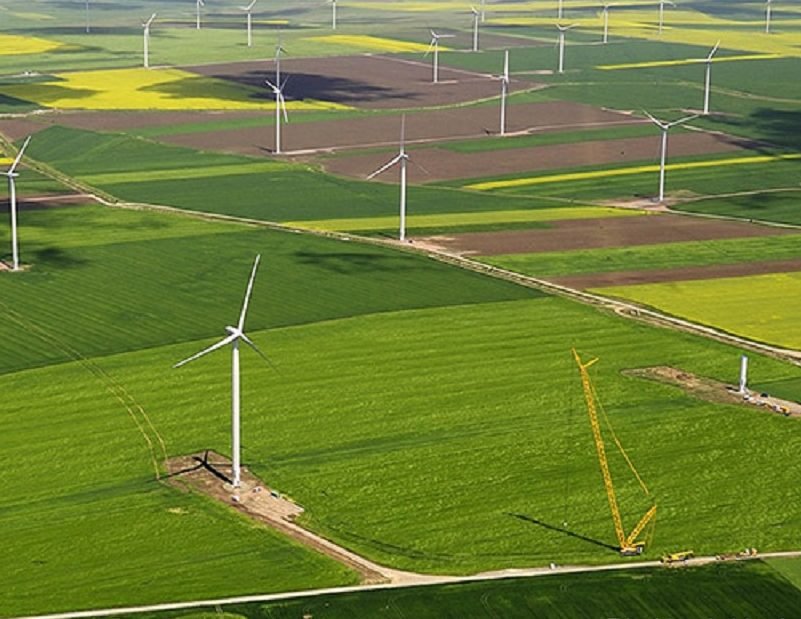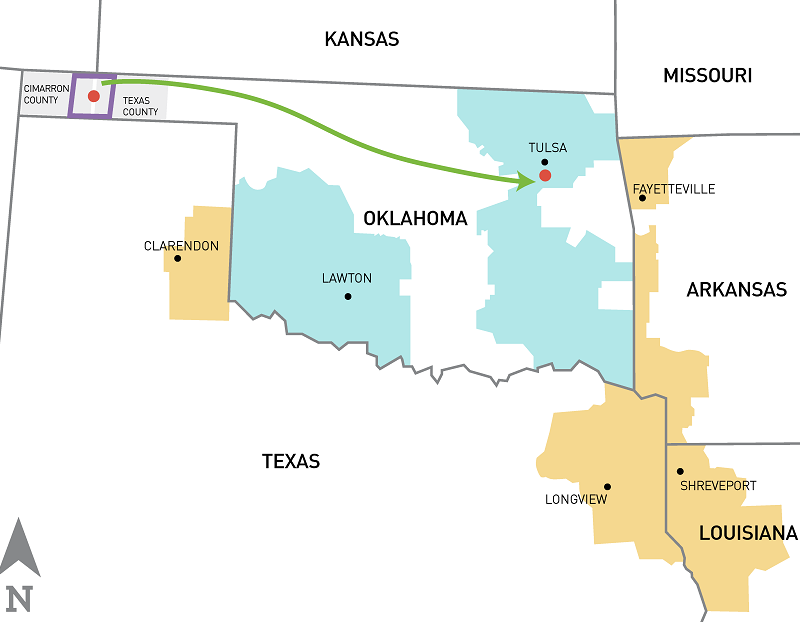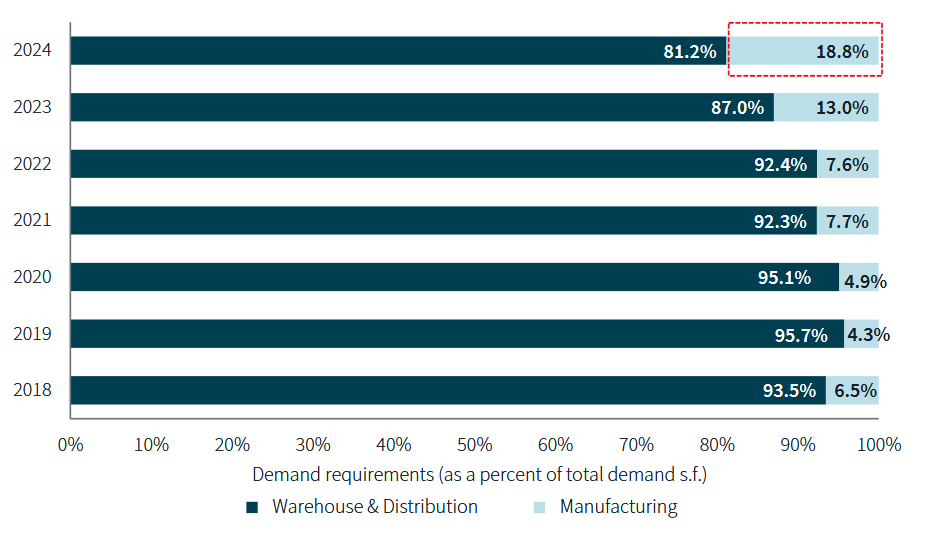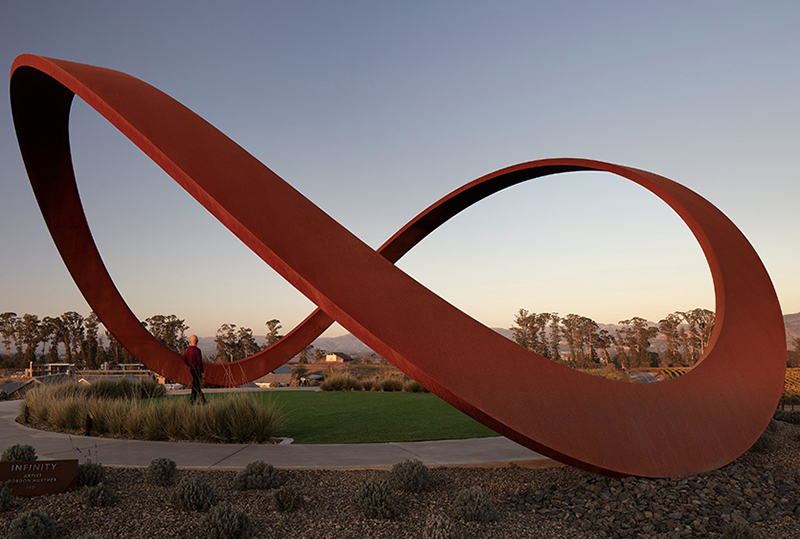Largest U.S. Wind Farm Reaches Milestone
Approval of a key transmission line is a crucial step for the $4.5 billion Wind Catcher project.
By Diana Mosher

A 2,000-megawatt wind farm in Western Oklahoma, similar to the facility depicted here, will serve some 1.1 million customers upon completion in 2020. Photo credit: GE Renewable Energy)
The renewable energy movement reached a milestone in June when the Louisiana Public Service Commission (LPSC) approved the 350-mile-long Wind Catcher Energy Connection, a linchpin of the largest single-site wind farm in the U.S.
“By tapping into this exceptional wind resource, we are further diversifying our energy resource mix and delivering long-term savings to the Louisiana customers and communities we serve,” said Malcolm Smoak, Southwestern Electric Power Co. (SWEPCO) president and chief operating officer.
Wind Catcher is among several major recently announced projects in the Southwest, such as Xcel Energy’s 1,230-megawatt plan for wind farms in Texas and New Mexico.
Developed by Invenergy in the western panhandle of Oklahoma, the $4.5 billion Wind Catcher project comprises a 2,000-megawatt wind farm as well as the dedicated line that will transport electricity to customers in Louisiana, Arkansas, Texas and Oklahoma. Located on about 300,000 acres in Cimarron and Texas Counties, Wind Catcher will generate power from 800 state-of-the-art GE 2.5 megawatt turbines. Construction began in 2016.
“We are asking utility regulators to approve plans for SWEPCO and its sister company Public Service Company of Oklahoma (PSO) to purchase the wind farm from Invenergy when construction is complete, which is expected by the end of 2020, and to build the power line,” said Tammy Ridout, a spokesperson for American Electric Power, a subsidiary of SWEPCO. “We already have received approval from Arkansas, Louisiana, and the Federal Energy Regulatory Commission, and we hope for timely approvals from the utility commissions in Oklahoma and Texas.”
Oklahoma’s panhandle offers one of the nation’s best wind resources, but it’s hundreds of miles from the cities and communities that most need the power it generates. “Through the Wind Catcher project, we can deliver this renewable power to nearly 1.1 million energy customers in the south central United States and save them money at the same time,” said Ridout. She compared the 350-mile power line to “a long extension cord.” SWEPCO’s service territory encompasses northwestern and central Louisiana, western Arkansas, East Texas and part of the Panhandle area of North Texas. PSO serves about 550,000 customers in Oklahoma, including the Tulsa, McAlester and Lawton areas.

The Wind Catcher Energy Connection Project will transmit power from the largest U.S. wind project in western Oklahoma to customers in Oklahoma, Texas, Arkansas and Louisiana. (Map courtesy of Southwestern Electric Power Co. and Public Service Company of Oklahoma)
SWEPCO anticipates the project will save its customers more than $7 billion over the 25-year life of the wind farm, compared to the projected costs of buying power on the open market. Customers will see savings through a reduction in the fuel portion of their bills, beginning in 2021. Savings will result from the zero fuel cost for wind, which lowers SWEPCO’s overall fuel and purchased power costs; full value of the federal Production Tax Credit, which is available for construction of new wind farm projects; and the cost-efficient delivery of the wind generation to customers through the new, dedicated power line.
Mary Ryan, a spokesperson for Invenergy LLC, estimated that construction of the wind farm and transmission line will create more than 8,000 jobs including 80 permanent jobs once operational. Project partners Invenergy, PSO and GE will provide $200,000 in scholarships and training for students in the wind certification program at High Plains Technology Center in the Oklahoma panhandle. Wind Catcher is also expected to an estimated $300 million to local communities in property taxes over the life of the project.
“When it comes on line, Wind Catcher will help companies, universities, cities and other customers meet their sustainability and renewable energy goals,” said Ryan. Large energy consumers are increasingly interested in renewable energy to power their operations, and backers say that the project will make the region more attractive to new employers, driving additional associated economic development.
“This $4.5 billion investment brings with it unique technical and engineering challenges, as well as regulatory approval requirements in multiple jurisdictions,” adds Ryan. Key elements of the settlement agreement approved by the LPSC are guarantees agreed to by SWEPCO, including a cap on construction costs, qualification for 100 percent of the federal Production Tax Credits and minimum annual production.
The Wind Catcher project also remains subject to the approval of SWEPCO’s applications in Texas, and PSO’s application in Oklahoma. Six parties have joined with PSO in a settlement agreement pending before the Oklahoma Corporate Commission. The Arkansas Public Service Commission approved the project on May 8.







You must be logged in to post a comment.